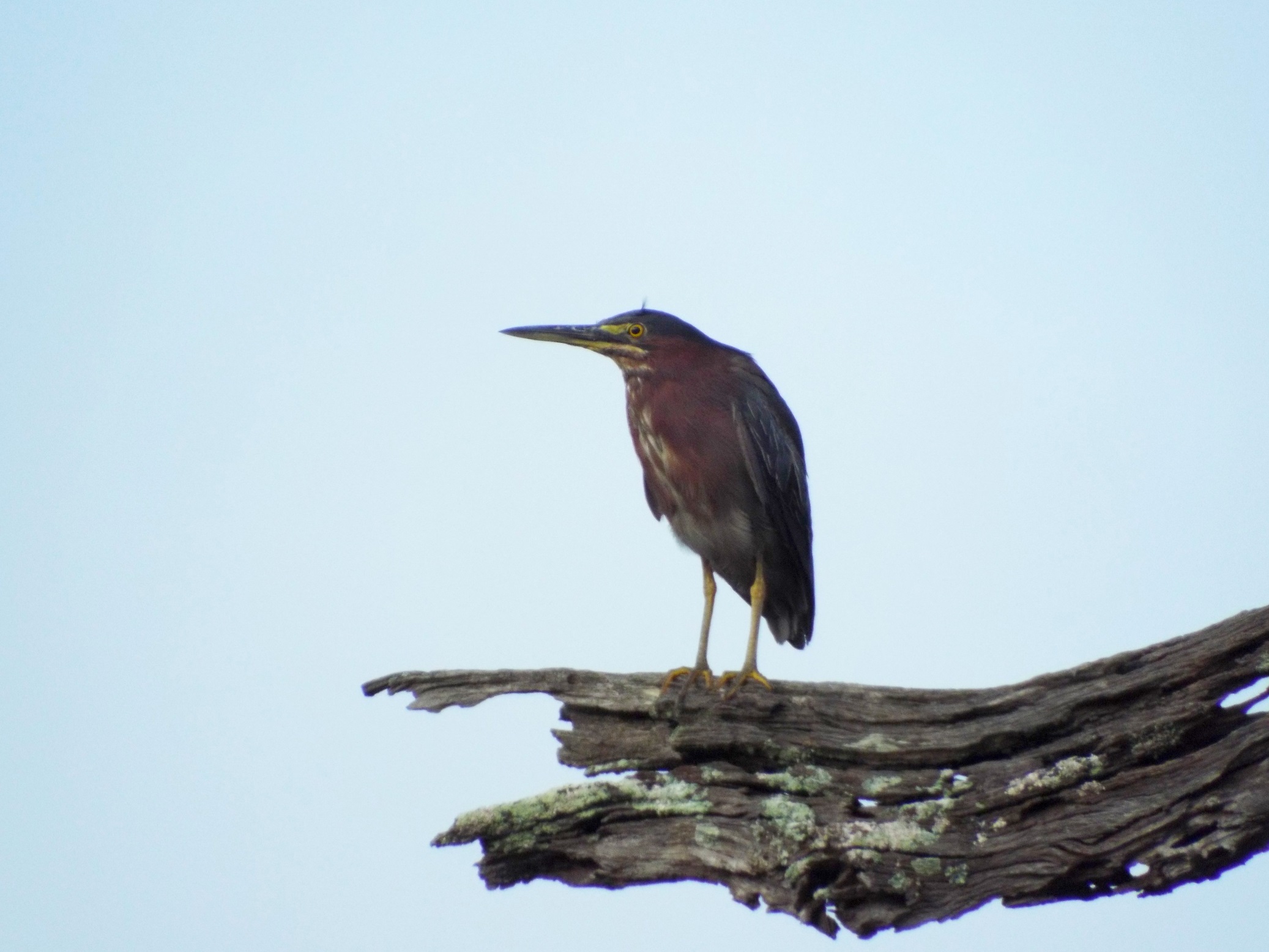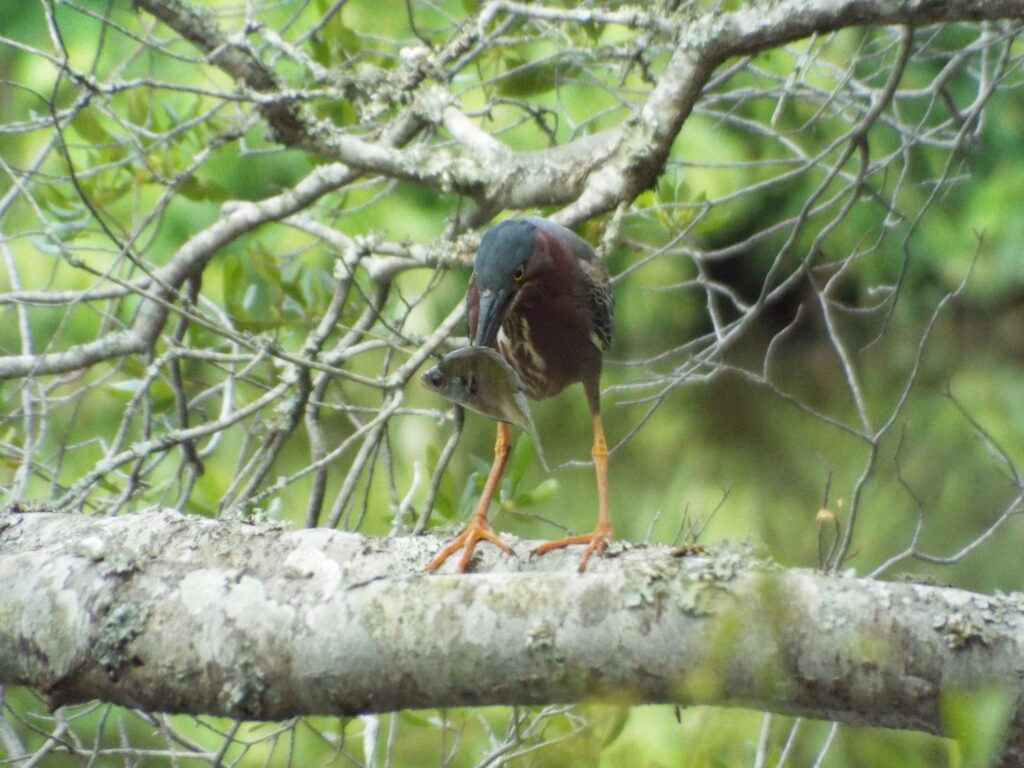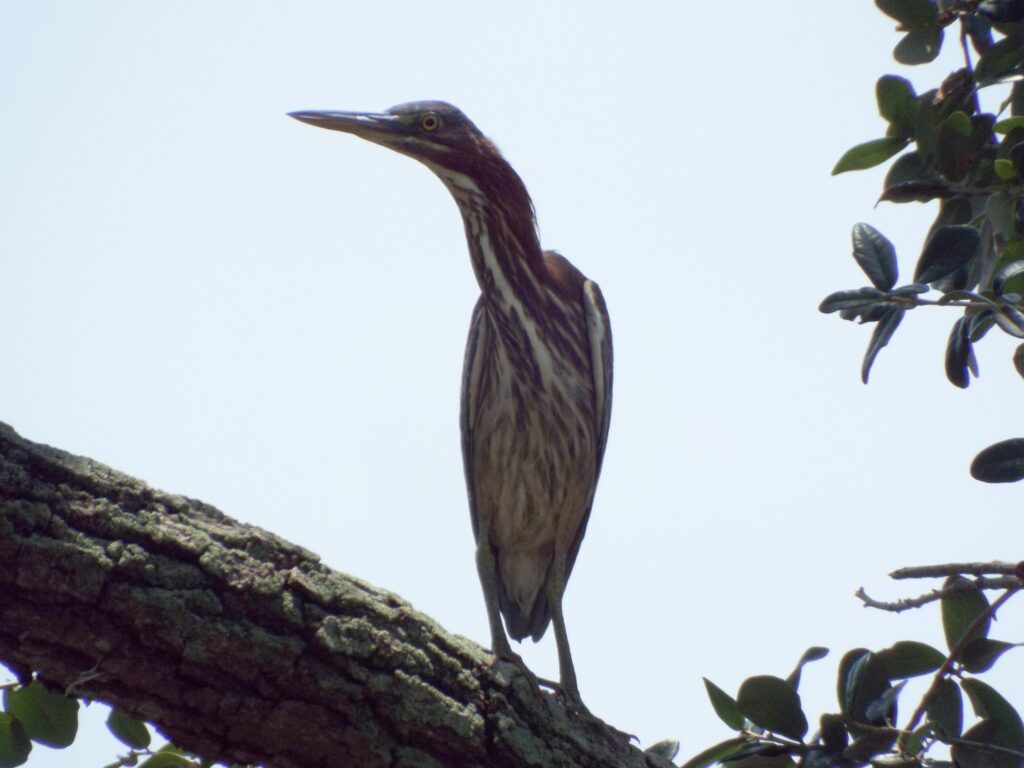




This week for Flora and Fauna Friday, we have our common compact wader, the Green Heron (Butorides virescens).
Buried between the buckling branches and broken boughs on the banks of a backwater bottomland stalks our Green Heron. Green Herons are a small, stocky wading bird with proportionately shorter legs than most of our other herons and egrets and a neck tucked tight against the body. They’re about the size of a crow. Despite the compact body plan, the Green Heron still sports that trademark long serpentine neck of the herons. Which, fully extended, is as long as its whole torso. Green Herons are an easy bird to identify just by their size and shape. However, their plumage is also distinct; Golden eyes, golden legs, dark bill, a neck and breast saturated with a rich burgundy-brown broken only by a jagged white streak down the center, all capped off with a mantle, wings, and crown of inky iridescent-green. The Green Heron’s call is a staple sound of the dog days of summer along our marshes, a sharp, ringing “Skyow!” that trails off as it soars overhead or a short burst of harsh growls and clucks as it jettisons itself from a creek bank.
Green Herons are most abundant on Edisto Island in the summer, after they’ve returned from a spring of nesting in the rookeries. However, juveniles and a few resident birds can be spotted around the Sea Islands year-round. Green Herons are generalists and can be found in most permanent wetland habitats. From the backwater lagoons of the barriers island, up the pluff-mud banks and into the cordgrass along the tidal creeks, along the rice field dikes, into the cypress swamps and bottomlands, and around the oxbow lakes, canals, reservoirs, and ponds, they can be found all across South Carolina. Green Herons are ambush hunters. They prefer to nestle onto a promising cove, snag, mat, or hummock positioned over standing water to wait for passing prey, rather than to wade for prey like our larger herons and egrets. From there they use their extra-long neck to strike through the surface of the water. Green Herons feed mainly on small fish but also a wide variety of little critters, including crayfish, insects, and frogs.